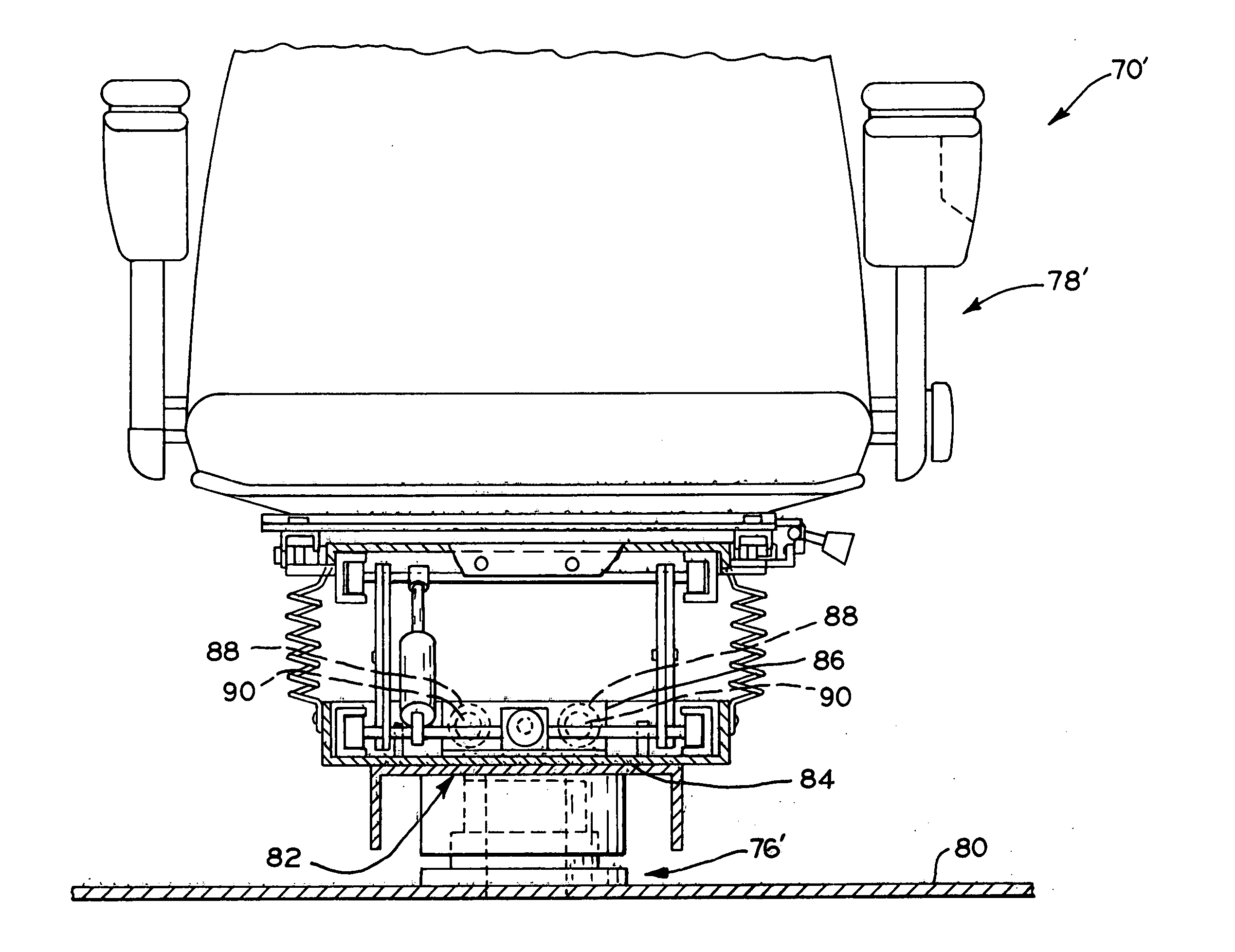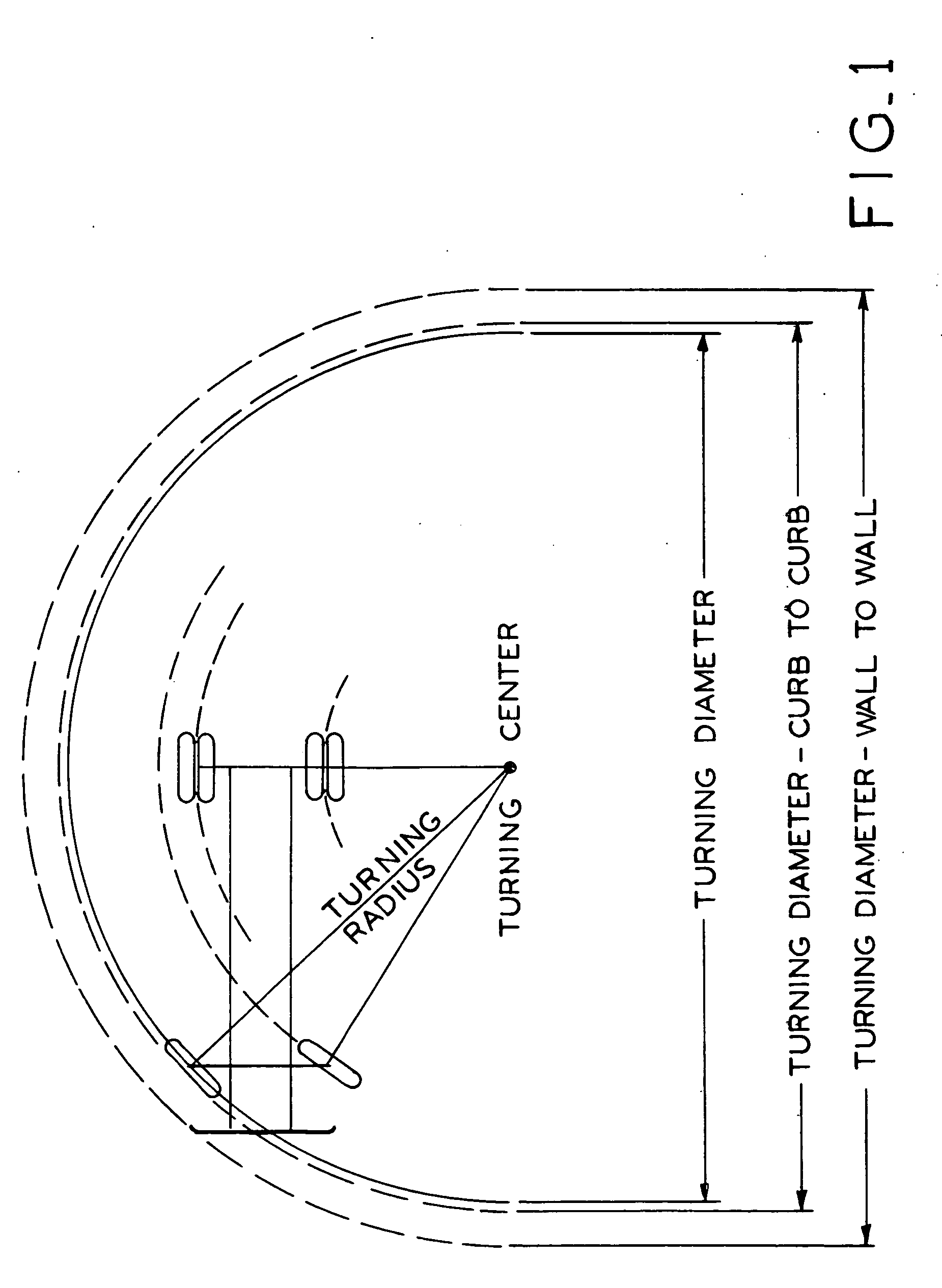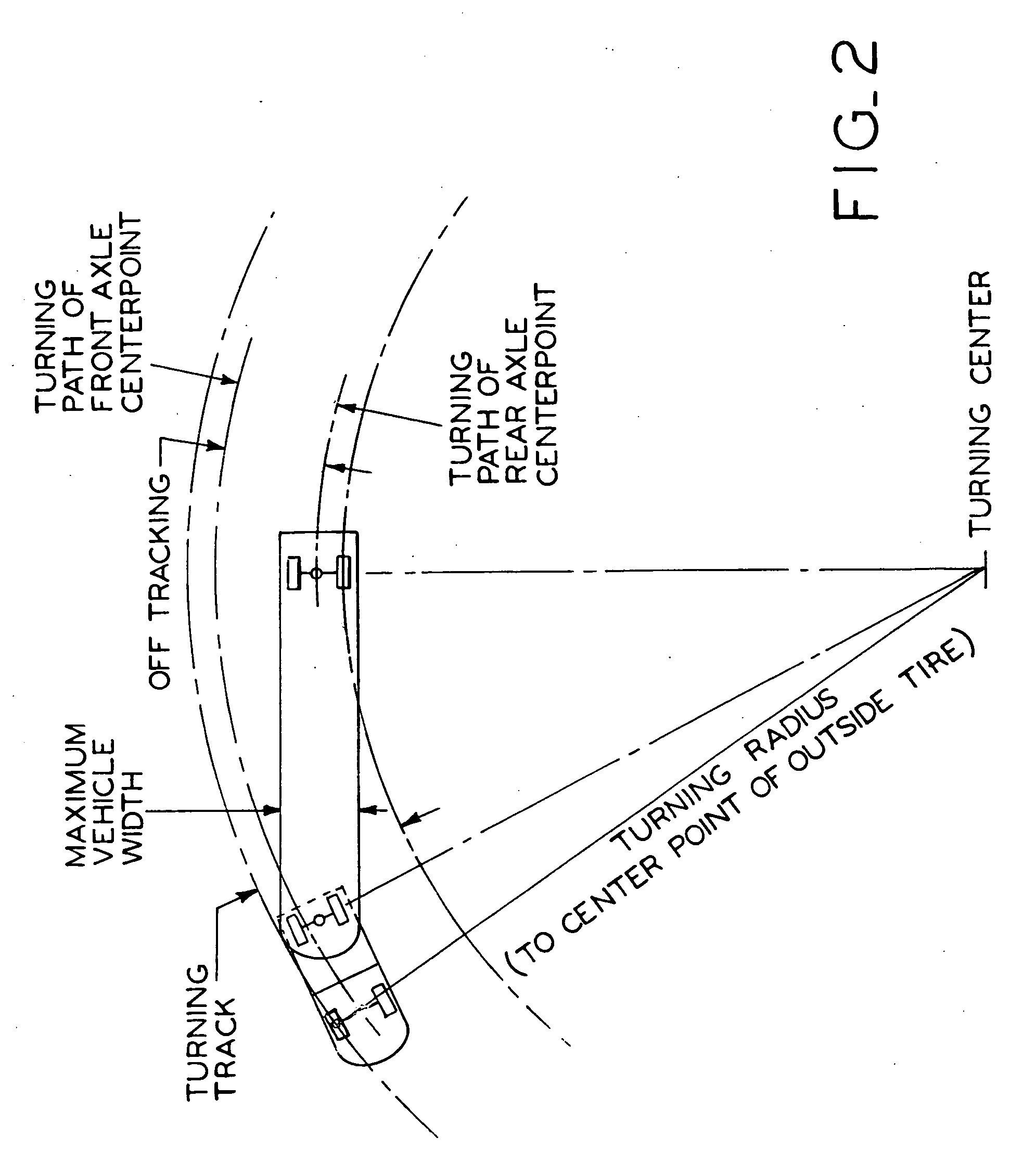Differential steering application for trailer spotter vehicles
a technology for spotter vehicles and steering systems, applied in the direction of non-deflectable wheel steering, transportation and packaging, tractors, etc., can solve the problems of unnecessarily climbing up and down stairs for an extra hundred feet, specialized tractors did not benefit from a low forward entry cab, and added to fatigue, so as to reduce the wall-to-wall turning diameter of tractors, minimal maneuvering space and effort, the effect of improving maneuverability
- Summary
- Abstract
- Description
- Claims
- Application Information
AI Technical Summary
Benefits of technology
Problems solved by technology
Method used
Image
Examples
Embodiment Construction
[0042] Referring to FIGS. 4-6, trailer spotter 30 of the present invention includes cab 32 and frame 34. Trailer spotter 30 further includes differential drive system 36 mounted to frame 34 which is operatively engaged with left rear wheels 38 and right rear wheels 40. Frame 34 further includes an engine cradle which houses engine 39, multi-pump drive 41, variable displacement hydraulic pumps 43 and 45, hydraulic radiator 47 and turbocharger intercooler 49 of differential drive system 36. In operation, air flows through turbocharger intercooler 49 into engine 39 to facilitate combustion therein, as is known in the art. Trailer spotter 30 further includes fuel tank 51, for storing fuel for engine 39, and hydraulic tank 53, for storing hydraulic fluid for differential drive system 36.
[0043] Trailer spotter 30 further includes engine cover 59 mounted above engine 39. Engine cover 59 is rotatable about pillow block bearings 61 to provide access to engine 39. Engine cover 59, when it is...
PUM
 Login to View More
Login to View More Abstract
Description
Claims
Application Information
 Login to View More
Login to View More - R&D
- Intellectual Property
- Life Sciences
- Materials
- Tech Scout
- Unparalleled Data Quality
- Higher Quality Content
- 60% Fewer Hallucinations
Browse by: Latest US Patents, China's latest patents, Technical Efficacy Thesaurus, Application Domain, Technology Topic, Popular Technical Reports.
© 2025 PatSnap. All rights reserved.Legal|Privacy policy|Modern Slavery Act Transparency Statement|Sitemap|About US| Contact US: help@patsnap.com



